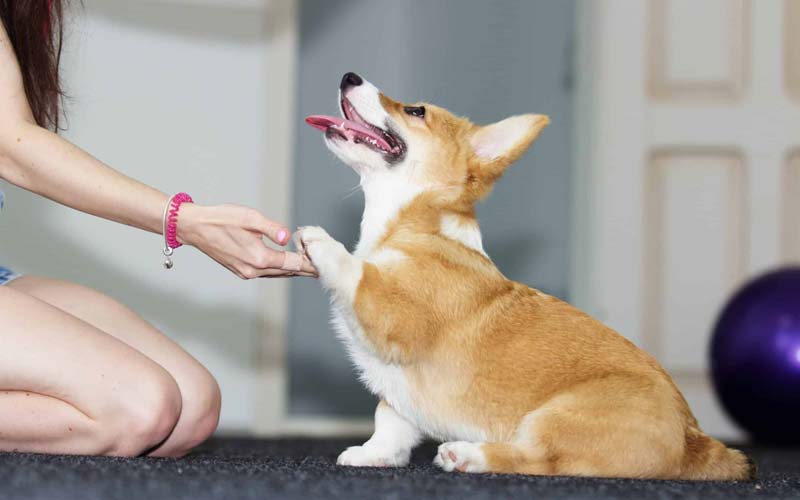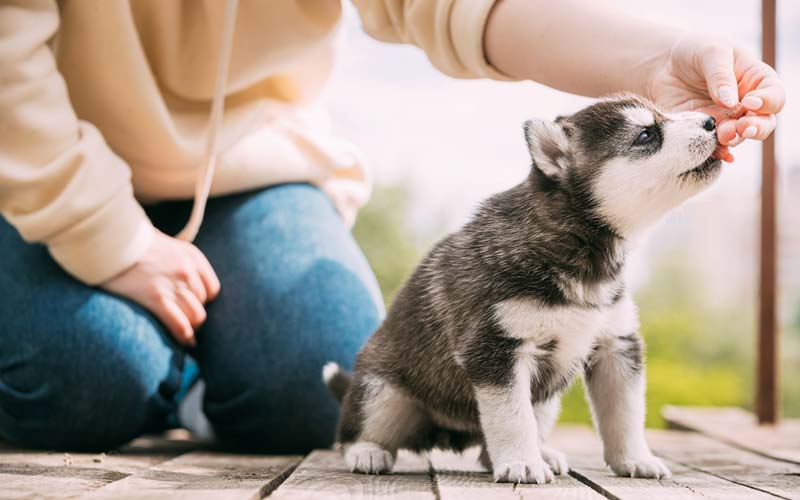Bringing a puppy into your home is an exciting experience, full of joy and new challenges. However, one of the most anticipated moments for any new puppy owner is when their furry companion begins to show signs of genuine affection. As much as we want that instant connection, the reality is that love and trust from a puppy take time to develop.

Understanding how puppies bond with their owners is crucial for building a healthy, lasting relationship. From the initial curiosity of the first few days to the deeper attachment that comes with routine and care, the process of earning a puppy’s love requires patience, consistency, and positive interactions.
In this article, we’ll explore the key factors that influence how quickly a puppy bonds, the signs of affection to watch for, and how you can actively strengthen the bond between you and your new best friend. Whether you’re a first-time puppy owner or adopting a rescue pup, this guide will help you foster a loving, trust-filled relationship with your dog.
1. The Puppy Bonding Process: What to Expect
Puppies, like people, take time to form meaningful attachments. When they first arrive in a new home, they are often unsure and curious about their surroundings. During the first few days, your puppy is likely to be cautious, exploring its environment while being somewhat wary of new faces and experiences. At this stage, it’s important to provide comfort and a safe space as they adapt.
As your puppy settles in over the first few weeks, you’ll notice early signs of trust starting to develop. Routine and consistency play a crucial role here. Simple acts like feeding at regular times, gentle handling, and rewarding positive behavior help your puppy feel secure. As they begin to understand that you are a source of care and safety, you’ll see more affection—tail wagging, following you around, and wanting to play.
By the first few months, a deeper emotional attachment forms. Your puppy will start to anticipate daily routines, like walks or playtime, and may actively seek your attention and comfort. While some puppies bond more quickly, others may take longer, especially if they’ve had prior negative experiences or are naturally more independent. Each puppy’s bonding process is unique, but with patience, love, and consistency, a strong, lasting connection will eventually develop.

2. Factors That Affect How Quickly a Puppy Bonds
Several factors influence how quickly a puppy forms a bond with its owner. Understanding these can help set realistic expectations and guide you toward building a loving relationship.
Consistency is one of the most critical factors in establishing trust. Puppies thrive on routine. Feeding them at regular times, walking them consistently, and maintaining a predictable schedule help your puppy feel secure in its environment. Over time, this reliability reinforces that you are a dependable caregiver, which fosters trust and affection.
Positive reinforcement plays a key role in building positive associations with you. Rewarding your puppy with treats, praise, and affection for good behavior strengthens the bond. For example, when your puppy listens to a command or approaches you without fear, offering a treat or a kind word helps them associate you with safety and enjoyment. Over time, this creates a foundation of trust and love.
Socialization is also vital in shaping how quickly a puppy bonds. Puppies exposed to new people, other animals, and various environments from a young age tend to be more emotionally ready to bond with humans. Proper socialization helps them feel more comfortable in different situations, reducing fear and anxiety that could slow the bonding process.
A puppy’s past experiences can significantly impact how long it takes to bond. Puppies that have experienced trauma, neglect, or frequent changes in their environment—such as those in shelters—may take longer to trust and love a new owner. Patience and understanding are crucial in these cases, as it can take weeks or even months for the puppy to fully open up.
Finally, personality and breed also influence bonding. Some breeds, such as Golden Retrievers or Cavalier King Charles Spaniels, are naturally more affectionate and may bond quickly. On the other hand, more independent or reserved breeds, such as Shiba Inus or Basenjis, might take longer to form a deep emotional attachment. Similarly, individual puppy temperaments vary, meaning even within the same breed, one puppy may bond faster than another.
Recognizing these factors helps set the stage for a successful, loving relationship with your new puppy.

3. Signs Your Puppy Loves and Trusts You
As your puppy begins to bond with you, several signs will reveal that trust and love are growing. Recognizing these behaviors can reassure you that your puppy feels secure and affectionate toward you.
Physical affection is one of the most obvious indicators. Puppies that follow you around the house, wag their tails excitedly when they see you, or nudge you for attention are showing they trust and love you. This closeness reflects their desire to be near you and be part of your day-to-day life.
Another key sign is engagement. Puppies who make regular eye contact with you and respond to your voice or commands are demonstrating trust. Bringing toys to you for play is also a strong indication that they view you as a companion and source of fun. These moments of interaction show that your puppy is not only comfortable but also eager to include you in their activities.
Comfort is a major milestone in bonding. If your puppy sleeps near you, curls up by your feet, or prefers to lie close by when you’re relaxing, it’s a sign they feel safe in your presence. This behavior reflects a sense of security, as puppies are most vulnerable when they are resting.
Submission is another important signal of trust. When your puppy rolls onto its back for belly rubs, it’s showing vulnerability—one of the ultimate signs that your puppy loves and trusts you. This submissive posture indicates that they are comfortable enough to let their guard down, knowing they are in a safe and loving environment.
By recognizing these signs, you can be confident that your puppy is developing a deep emotional bond with you, solidifying the foundation of love and trust that will continue to grow over time.

4. How to Strengthen the Bond With Your Puppy
Strengthening the bond with your puppy is a continuous process that requires time, patience, and positive interactions. Here are several key ways to build that strong connection.
Quality time is the cornerstone of bonding. Regular playtime, training, and simply being together are essential for building trust and affection. Whether you’re engaging in a game of fetch, practicing commands, or cuddling on the couch, these shared experiences reinforce your puppy’s attachment to you. Spending meaningful time with your puppy helps them feel valued and cared for, making the bond stronger.
Another critical factor is positive interactions. Puppies learn best through reinforcement, so using treats, toys, and praise to reward good behavior is an excellent way to build trust. Whether your puppy is learning basic commands like “sit” or simply behaving well during a walk, offering praise and rewards strengthens their association with you as a source of positive experiences. Over time, this approach helps foster a loving relationship.
Gentle handling is equally important. Puppies are sensitive and can become fearful if treated harshly. It’s crucial to be calm and patient when handling or disciplining your puppy. Avoid punishment that could damage trust—such as yelling or physical correction—as this can lead to fear and slow down the bonding process. Instead, use gentle redirection and positive reinforcement to guide their behavior.
Establishing a routine is another key step in making your puppy feel secure. Puppies thrive on structure, and regular feeding times, walks, and bedtime routines help them understand what to expect. When a puppy feels secure in its environment, it is more likely to relax and form a trusting bond with its owner.
Training sessions are not only great for teaching obedience, but they also build mutual respect and trust. Training your puppy with consistency, using positive methods like treats and praise, helps create clear communication. Your puppy learns to trust you as a leader, and as they succeed in their training, they also grow more confident and secure in their relationship with you.
Finally, don’t underestimate the importance of exercise and mental stimulation. Meeting your puppy’s physical needs through regular exercise and play is crucial for their well-being. Puppies have a lot of energy, and regular walks, playtime, and interactive toys help keep them mentally and physically engaged. A well-exercised puppy is not only happier but also more likely to bond with you through shared activities.
By incorporating these practices—spending quality time, reinforcing positive behaviors, handling gently, establishing routines, and providing training and exercise—you can strengthen the bond with your puppy and create a lasting, loving relationship.

5. Patience is Key: Trust Takes Time
Building a deep, loving bond with your puppy is a journey that requires patience and consistent effort. Just as with any relationship, trust and affection develop gradually. Some puppies might form a strong attachment within a few weeks, while others may take several months to fully open up, depending on their past experiences, personality, and the care they receive.
Patience is crucial during this process. Every puppy is unique, and the time it takes to build a trusting relationship varies. It’s essential to remain understanding and avoid becoming discouraged if your puppy doesn’t show signs of affection right away. Consistent, positive interactions and a supportive environment are key to fostering a loving bond.
Remember, the most critical factors in developing a lasting connection are patience, understanding, and consistency. By continuing to provide care, stability, and love, you’ll support your puppy in feeling secure and eventually, deeply attached to you.

Conclusion
Understanding how long it takes for a puppy to love you can help set realistic expectations and foster a positive bonding experience. Throughout the bonding process, it’s essential to recognize that trust and affection develop over time, influenced by consistency, positive reinforcement, socialization, and the puppy’s past experiences and personality.
To summarize, focus on spending quality time with your puppy, reinforcing good behavior with treats and praise, handling them gently, and establishing a routine that promotes security. Consistent training and meeting their physical and mental needs also play significant roles in strengthening your bond.
Remember, patience is key. Every puppy is unique, and the journey to a loving relationship may vary. Stay patient and consistent, and your efforts will be rewarded with a deep, affectionate bond with your new furry friend.
Encourage your puppy to thrive by committing to these practices and embracing the journey. The love and trust you build will create a strong foundation for a rewarding and joyful relationship for years to come.